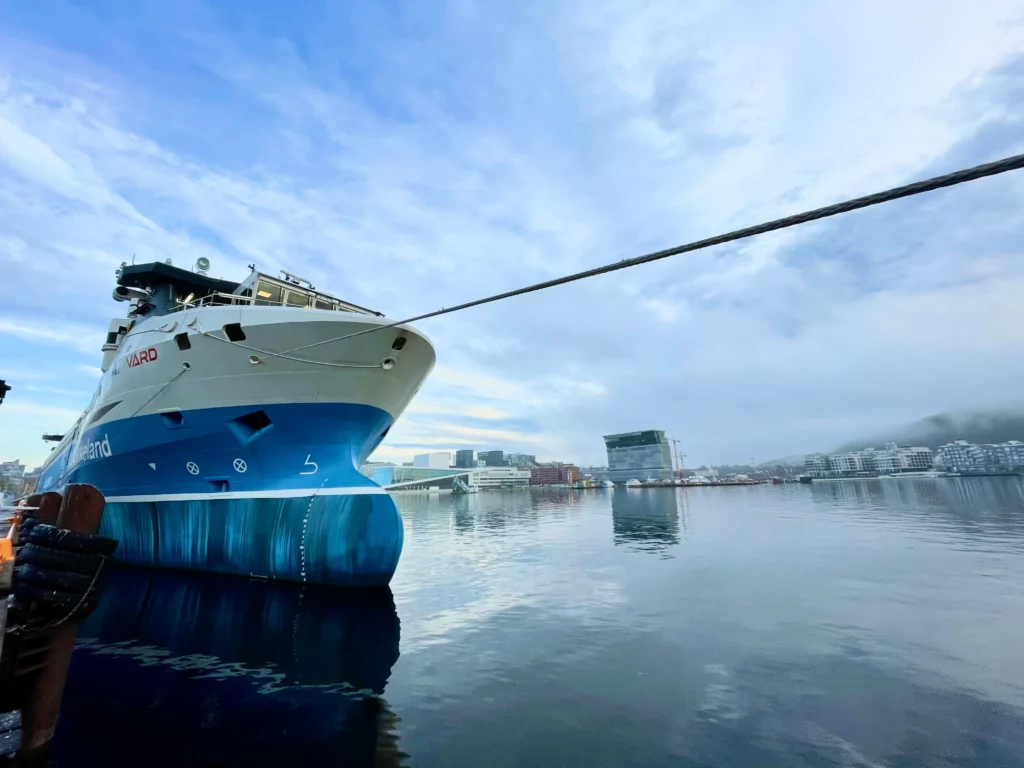Yara, a fertilizer production company from Norway, has debuted the world’s first electric and self-propelled container ship, named the Yara Birkeland. Starting next year, the ship will replace lorry haulage between Yara’s plant in Porsgrunn in southern Norway and its export port in Brevik, located 14 kilometers (8.7 miles) away by road.

Like taking 40,000 trucks off the road
The container shipping industry plays a key role in global supply chains, but until now, it has taken few steps toward reducing its greenhouse gas emissions. Maritime shipping isn’t included in the 2015 Paris Agreement on climate change, which seeks to limit global temperatures to 2ºC – despite the fact that the industry is responsible for 2% to 3% of global emissions (comparable to the emissions of a smaller country).
Back in 2017, Yara decided to work on the development of a zero-emissions vessel with maritime technology company Kongsberg. The project was almost abandoned with the COVID-19 pandemic which delayed the delivery of the vessel by over a year. The ship will cut emissions and reduce transport by up to 40,000 truckloads per year, Yara estimates.
The ship will travel along the coast between the ports of Herøya, Brevik, and Larvik in southern Norway – sailing about 12 nautical miles per shipment. After the inauguration, the ship will start its commercial operations in 2022. Also, until 2024, the ship will be under a testing period, making sure that the technology that makes it autonomous fully works.
“Norway is a big ocean and maritime nation, and other nations look to Norway for green solutions at sea. Yara Birkeland is the result of the strong knowledge and experience we have in the Norwegian maritime cluster and industry,” Geir Håøy, CEO of the Kongsberg Group, said in a statement. “We contribute to the green transition.”
The ship will navigate, recharge its batteries and load and offload its cargo without human involvement. It comes with a set of sensors to detect objects in the water and decide what action to take to avoid hitting anything. It has the capacity of shipping 120 20-foot containers of fertilizer at a time, with batteries equivalent to 100 Tesla cars.
“On the way to a low-emission society, transport emissions must come down to almost zero. To achieve that, we need projects that can transform the market – projects that have the potential to pave the way for others and increase the pace of”, Nils Kristian Nakstad, CEO of Enova, which funded the ship construction, said in a statement.
Looking ahead
The outcome of this project and a few others in the coming years will determine whether the electrification of river and sea transport can expand. Alongside Yara, logistics company Maersk is piloting a 600-kW marine battery system onboard the Maersk Cape Town ship, while ABB and Siemens have also been working on a few electric solutions.
Meanwhile, Yara is already thinking of the next step – the development of green ammonia. Produced using renewable energy, it would enable the production of emissions-free fertilizer and is also a promising zero-emission fuel for the maritime sector. Ammonia production currently accounts for 2% of fossil energy consumption.
“Renewable energy was our starting point in 1905. Now, ammonia can bring us back to our roots. Our large shipping network and existing infrastructure means that ammonia has the potential to become the leading fuel for long-distance shipping globally,” Magnus Krogh Ankarstrand, CEO of Yara Clean Ammonia, said in a press statement.
All in all, there are some reasons for optimism — but there’s a long way to go. There are over 5,000 operating container ships in the world, and getting all (or enough) of them to decarbonize will take a lot of time and effort.









